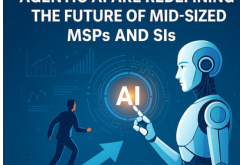A study undertaken by Ozonetel has unveiled insights pertaining to the call center industry in 2021. The study analyzed a sample set of 24 million calls made on Ozonetel’s CloudAgent platform by nearly 61914 active agents in 2021. The analysis includes both inbound and outbound calls made on Ozonetel’s platform across multiple verticals such as Ecommerce- Groceries, Ecommerce D2C, Restaurants, Insurance, Fintech, & Financial Services, Banking & Broking, Healthcare & Pharma, and Real Estate call centers. The report focuses on some of the areas where call centers excelled and others where they struggled this year.
Some of the parameters that call centers excelled this year are:
- Connection Rate: In outbound calling, a lot of calls dial to busy lines, or go unanswered. Average connection rates inform how many calls get connected to a contact. The average connection rate this year saw a drastic uptick, i.e., 47 percent as compared to 38 percent in 2020. When answer rates rise, it usually means that an agent is reaching out to the right prospects at the right time. Another reason could be that businesses are implementing appropriate technology, such as Truecaller integration, which shows prospects the reason for calling them even before they answer a call. This ensures increased customer attention and decreased rejection/ignorance of unknown calls.
- Agents are more prepared than ever before: ‘Average Agent Speed of Answer’ (pick up time) is the average time a call center agent takes to answer inbound calls. This includes the time the agent’s phone rings but excludes the time the caller spends in the IVR or waiting in the queue. The average agent response time in 2021 was reported to be 8 seconds, the same as in 2020. This year, even during the second wave of COVID-19, the call centers were more prepared and equipped to handle the sudden surge in demand. The stability of the overall average pick-up time by the call center indicates the consistent availability of agents at all times.
- Average Talk Time: ‘Average Talk Time’ indicates the time an agent spends talking to a caller on average. In 2021, this number is 3.7 minutes, which is nearly the same as 2020. A consistent talk time indicates that agents are able to resolve calls fast enough or that customers do not need to speak more to explain their issues.
- Wrap time: ‘Wrap Time’ typically affects how fast call center agents can attend to the next call which affects queue wait time and productivity. There has been a decrease in the time taken for After Call Work, from 45 seconds in 2020 to 41 seconds in 2021. The reduction in wrap time indicates that agents can find an appropriate disposition code to tag the conversation and schedule quick follow-ups via phone or SMS. In 2019, however, the average wrap time reported was 25 seconds. This demonstrates that, while there has been progress since last year, call center managers may still need to work on this parameter in order to return to pre-pandemic status.
- Hold Time: ‘Hold Time’ indicates the average time an agent puts a customer on hold either to route it to another agent or check on the queries. In 2021, the average hold time has decreased to 11 seconds as compared to 13 seconds in 2020. The decrease in hold time indicates that an agent has details to get back sooner to the call. This also means higher customer satisfaction as customers need to stay on the call for less time after the initial communication and this, in turn, leads to a better flow of the conversation.
Some of the parameters, where call centers struggled to ensure highest customer satisfaction, this year are:
- Callers had to wait longer: ‘Average Time in Queue’ is the number of time callers have to wait in the queue before they are connected to representatives. This is an important customer experience metric as the longer customers wait, the less satisfied they are likely to be. Ozonetel’s report reveals that on average a caller waited 46 seconds to get connected to a live agent as opposed to 37 seconds in 2020. Queue times decrease when there are more agents available to answer calls. This increase was seen generally in sectors that saw a sudden spike in call volume during the pandemic. Today, most of the queue times have reverted to their pre-pandemic levels.
- Customers are more impatient: ‘Abandonment Rate’ tells how many calls went unanswered by agents as callers disconnected in the queue itself. On average 28 percentof calls were disconnected before being routed to an agent in 2021 as compared to 15 percent in 2020. This year, there is an increased average queue time, the abandonment rates are also higher. This indicates that customers have become more impatient and expect faster service than before.
The Vertical Report Card
2021 has turned out to be a challenging year for the call center industry under some parameters. However, sectors like Restaurants, e-commerce have kept their service standards high. Whereas sectors like, banking, real estate have struggled to keep up. Here is a list of verticals that did the best and struggled under different parameters.
| Parameter | Winner | Back bencher |
| Contact Rate | Restaurants (77 percent) | Real Estate (27 percent) |
| Pick Up Time | E-commerce Groceries (2.25 seconds) | Banking & broking (14.5 seconds) |
| Talk Time | Real estate (2.9 minutes) | Insurance, Fintech, & Financial services (6.5 minutes) |
| Wrap Time | Restaurants (5.25 seconds) | Insurance, Fintech, & Financial services (96 seconds) |
| Time in Queue | E-commerce Groceries (20 seconds) | Banking & broking (125 seconds) |
| Abandonment Rate | E-commerce Groceries (8 percent) | Real Estate (47.25 percent) |
| Hold Time | Restaurants (1.5 seconds) | E-commerce groceries (29 seconds) |
Chaitanya Chokkareddy, Chief Innovation Officer, Ozonetel said, “Given the challenging atmosphere of 2021, brands had to work really hard to ensure client satisfaction. The sectors that are doing well under different parameters are the ones adapting to technological advancements quickly and creating omni-channel touch-points. We have been doing this study annually and every year it uncovers many interesting insights and learning for we and our customers.”
 Latest Technology News Today – Get Latest Information Technology Updates and Services Latest Technology News Today – Get Latest Information Technology Updates and Services
Latest Technology News Today – Get Latest Information Technology Updates and Services Latest Technology News Today – Get Latest Information Technology Updates and Services 







